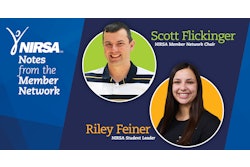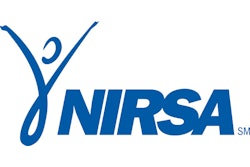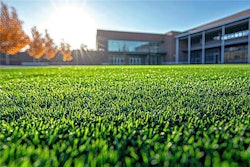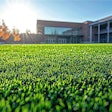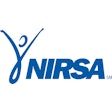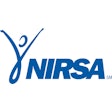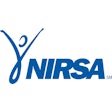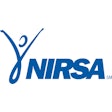![The SUNY Cortland Student Life Center includes traditional fitness spaces, as well as a food court and Outdoor Pursuits Center. [Photos by Fentress Photography]](https://img.athleticbusiness.com/files/base/abmedia/all/image/2016/04/ab.AAA-416-AB_feat.png?auto=format%2Ccompress&q=70&w=400)
This article appeared in the April issue of Athletic Business. Athletic Business is a free magazine for professionals in the athletic, fitness and recreation industry. Click here to subscribe.
The traditional college recreation center is dying. A testament to their initial success in meeting a core demand of students, these buildings are morphing from fitness and recreation centers into hubs of campus life, creating new connections to meet students' interests. Students still want and need a place to work out, but more often these facilities' names include "wellness," "activity," "student life" or "commons" to refer to the multifaceted nature of the activities within.
The idea of a comprehensive student life recreation facility has been growing in popularity over the past decade, and colleges and universities are finding innovative ways to incorporate services into one-stop-shopping facilities that fit the needs of their students. Universities are embracing the connection between a healthy mind, body and spirit, and student interest is rising in services traditionally only found in the campus union. Additionally, college recreation centers have served as host for many events not directly related to fitness: blood drives, campus fundraisers, dances and even exams. Thus it was a natural progression to rethink the programming of new recreation centers.
More from AB: Student Health, Student Rec Compatible Under One Campus-Wellness Roof
REFLECTING A UNIQUE STUDENT BODY
More student services have been finding a home in the recreation center over the past decade. Schools have used this approach to incorporate health services, wellness needs, varsity athletics and more into facilities that are among the most used on campus. These programs are combined in different ways at different schools, reflecting the diverse needs of each particular college and its student body.
Well before any plans were drawn for its new Student Wellness Center, the University of North Dakota created a Healthy UND Coalition, which proposed a multidimensional concept of wellness. The UND Student Wellness Center was born from this vision, and the seven "dimensions" of wellness provided a framework for the facility's building structure, color scheme and wellness facility offerings.
More from AB: George S. Eccles Student Center
Each of the seven dimensions is represented by a corresponding service or activity within the facility: a mind/body studio (spiritual), a media lab/library (intellectual), massage and reflexology therapy rooms (emotional), a fitness center (physical), a lounge with a fireplace (social), views throughout the facility of the English Coulee River (environmental) and meeting rooms for professional development opportunities (occupational).
At the University of Nevada, Las Vegas, the new Student Recreation and Wellness center is adjacent to the existing student services building and incorporates student health services, counseling and psychological services, medical care facilities, wellness programming and food service — services that had previously been scattered across campus. University administrators wanted to create one single facility resource for all students, thus limiting the need for students to leave campus for medical and wellness services.
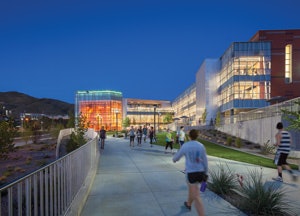 The University of Utah sought to break with the typical recreation center design with its George S. Eccles Student Life Center.
The University of Utah sought to break with the typical recreation center design with its George S. Eccles Student Life Center.
REPOSITIONING AND REARRANGING
Because recreation/student life facilities are used by a large percentage of the overall student population, they are often located in the center or at important intersections of campus, an advantageous location for other student services as well. The University of Utah's George S. Eccles Student Life Center (ESLC) is located on a main artery that links the academic core to student housing. The design of the facility serves to connect both parts of the campus and sees thousands of students passing through without necessarily using the recreation facilities.
As new programs move in, the design of the facility must also adjust. Fitness and recreation programming at the ESLC was moved away from the core of the building and instead created a ground-level "free zone" replete with a credit union, café and lounge spaces similar to a shopping mall. The recreation center is still monitored by a single control desk, as is typical. "The ESLC doesn't look like or function as every other recreation center, which was one of our goals: to create a space that specifically reflected the University of Utah and our campus culture," says University of Utah campus recreation services director Mary Bohlig.
More from AB: Hybrid Student Centers House Multiple Campus Functions
FINANCIAL INCENTIVES
At many smaller institutions, combining the popularity of the recreation center with other services just makes economic sense. The Student Life Center at State University of New York (SUNY)-Cortland includes a new dining facility across the shared lobby from the entrance to the recreation facility. Students can spend hours in the building, first working out at the fitness center, then crossing the lobby to grab a bite to eat. By combining two different projects into one facility, the campus found significant savings in site and infrastructure cost, saved valuable square footage by sharing public and support spaces, and reduced construction cost with a smaller facility footprint.
More from AB: Centers of Attention
Wartburg College utilized a different cost-conscious approach in designing its new wellness facility, partnering with the City of Waverly, Iowa, to bring services for two different populations into one space. The college and the city individually had been unable to afford facilities to improve wellness in the community. The Wartburg-Waverly Sports & Wellness Center provides public health assessments, fitness opportunities, food services and meeting spaces that are shared among both student members and community members. Athletes are provided varsity spaces such as training rooms, locker rooms and weight rooms that are separate from general membership areas. By bringing the two distinct user groups together, savings were realized in the construction, financing and operations of the new facility.
Bringing more programs and services into the student life facility opens up nearly endless opportunities for colleges and universities. The dynamic elements that make traditional recreation centers desirable buildings — transparency, abundant natural light, progressive architecture — also allow these facilities to be the perfect home to many unique but complementary activities.
Dan Sullivan is a project architect with St. Louis, Mo.-based Hastings+Chivetta Architects.
This article originally appeared in the April 2016 issue of Athletic Business with the title "College rec centers serve as a hub for expanded student life programs"



















